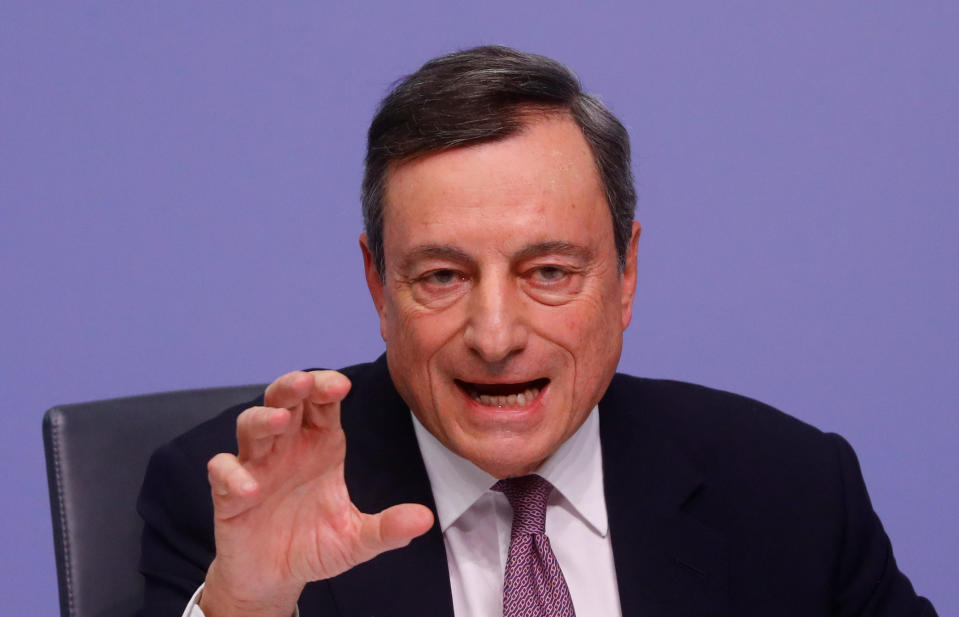Kroger earnings, ECB statement — What you need to know in markets on Thursday
After Gary Cohn’s resignation from the Trump administration rocked markets overnight on Tuesday, by the close of business on Wednesday it seemed like everything would be fine.
More or less.
On Wednesday, the Dow lost 82 points, or 0.3% to lead losses while the S&P 500 dropped just 1 point and the Nasdaq gained 24 points, or 0.3%.
This came after Cohn, Trump’s chief economic advisor, said he would resign on Tuesday evening, news which sent stock futures sharply lower. Reports on Wednesday also suggested that at noon Eastern on Thursday, Trump will formally announce steel and aluminum tariffs, though White House press secretary Sarah Huckabee Sanders suggested Wednesday that Mexico and Canada could be exempt from these sanctions.
So while there are certainly details still to be sorted out when it comes to Trump’s new trade policy, market action on Wednesday points to investors, for the moment, determining that an all-out trade war is not likely to follow from these moves.
Now turning to the calendar for Thursday, the European Central Bank’s latest monetary policy statement, due out at 7:45 a.m. ET and followed by an 8:30 a.m. ET press conference with ECB head Mario Draghi, will be a major market-moving event.
Expectations are the ECB will keep its interest rate policy unchanged, though most of the action will come when Draghi fields questions about the ECB’s plans to end its quantitative easing program later this year. Claus Vistesen, chief eurozone economist at Pantheon Macroeconomics, said in a note Wednesday that he expects the ECB will end its pledge to continue its asset purchase program beyond September 2018 if necessary.

On the U.S. side, investors will get the weekly reading on initial jobless claims ahead of Friday’s jobs report from the BLS as well as the latest Z.1 Flow of Funds report from the Federal Reserve, which will give us a picture of U.S. household net worth at the end of 2017.
In corporate earnings, Thursday is expected to feature results from Kroger (KR), Verifone (PAY), Navistar (NAV), and American Eagle (AEO). Kroger is likely to be the highlight as the grocery giant deals with new industry dynamics following Amazon’s (AMZN) acquisition of Whole Foods and shares of the grocer fell 6% on Wednesday.
Tight labor markets everywhere
On Wednesday, the Federal Reserve released its latest Beige Book, a collection of economic anecdotes from each of the Fed’s 12 districts.
This report helps form the basis of the economic discussion that will take place at the two-day FOMC meeting set to kick off in a little under two weeks.
And in this month’s edition of the report, one theme was clear — there is more demand for labor than their is supply.
“Across the country, contacts observed persistent labor market tightness and brisk demand for qualified workers, as well as increased activity at staffing placement services,” the report said.
“Several Districts reported continued worker shortages across most sectors, with contacts often mentioning shortages in the construction, information technology, and manufacturing sectors. In many Districts, wage growth picked up to a moderate pace.
“Most Districts saw employers raise wages and expand benefit packages in response to tight labor market conditions. Contacts in a few Districts conveyed reports of modest increases in compensation following passage of the Tax Cuts and Jobs Act.”
In January, wages rose 2.9% over the prior year, the most since the financial crisis. And while this rate of wage growth may not be as high as some economists expected with the unemployment at 4.1%, the Beige Book paints the picture of an economy where wages are set to go up as demand for labor is far outpacing supply.
And when the supply of some good cannot keep up with demand, the economic textbook says the price of this good must increase.
—
Myles Udland is a writer at Yahoo Finance. Follow him on Twitter @MylesUdland
Read more from Myles here:
A few major topics were missing from Warren Buffett’s latest annual letter
The Trump tax cut earned Warren Buffett’s Berkshire Hathaway $29 billion in 2017
Goldman Sachs says U.S. economic data right now is ‘as good as it gets’
One candidate for Amazon’s next headquarters looks like a clear frontrunner
Tax cuts are going to keep being a boon for the shareholder class
Auto sales declined for the first time since the financial crisis in 2017

